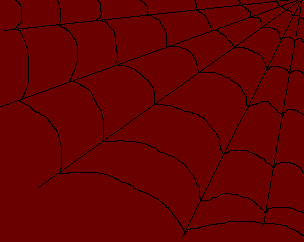Creativity Tests
Which way is she turning?
Are you left brained or right brained? Watch the girl below, if you see her turning clockwise, you are probably left brain dominate, if you see her turning counterclockwise, you are most likely right brain dominate.

Here is another test on hemispherical dominance by Synergistic Learning Incorporated. Download Brain.exe (Windows OS)
Here's another : (click the image)

Creativity tests are typically divided into four main components: Divergent thinking, Convergent thinking, Artistic assessments and Self assessments.
Divergent thinking is the ability to consciously generate new ideas that branch out to many possible solutions for a given problem. These solutions or responses are then scored on four components:
- Originality - statistical infrequency of response
- Fluency - number of responses
- Flexibility - the degree of difference of the responses, in other words do they come from a single domain or multiple domains
- Elaboration - the amount of detail of the response
Wallace and Kogan (1965)
Torrance Test of Creative Thinking (TTCT) (1974)
The Wallach-Kogan is out of print
The Guilford can be ordered from: http://www.mindgarden.com/67-alternate-uses
TTCT can be ordered from: http://www.ststesting.com/ngifted.html
Convergent thinking is the ability to correctly hone in the single correct solution to a problem. In creativity convergent thinking often requires taking a novel approach to the problem, seeing the problem from a different perspective or making a unique association between parts of the problem. Theses solutions are scored either correct or incorrect .
Insight ProblemsRemotes Associations Task (Mednick)
Artistic assessments are the evaluations of an artistic product (e.g., painting, story, poem, musical composition, collage, drawing etc.). Evaluations are typically done by two or more judges that must be in near agreement on the creativity of the product.
Barron-Welsh Art ScaleSelf assessments are person's responses to the amount of creativity a personal feels they exhibit. persons responses to the amount of creativity a person feels they exhibit.
Khatena-Torrance Creative Perception InventoryHow Do You Think (Davis)
Things Done on Your Own (Torrance, 1962)
The Creativity Behavior Inventory
Runco Ideation Behavior Scale (RIBS)
Creative Attitude Survey (Schaeffer)
Statement of Past Activities
NEO-PI-R (Openness to Experience component)
Gough Personality Scale
Other Assessments
Creativity Assessment PacketPreschool and Kindergarten Interests Descriptors
Scales for Rating the Behavioral Characteristics of Superior Students (Renzulli, 1993)
Creativity testing section developed by Dr. Gayle Dow (gayle.dow(at)cnu.edu).

